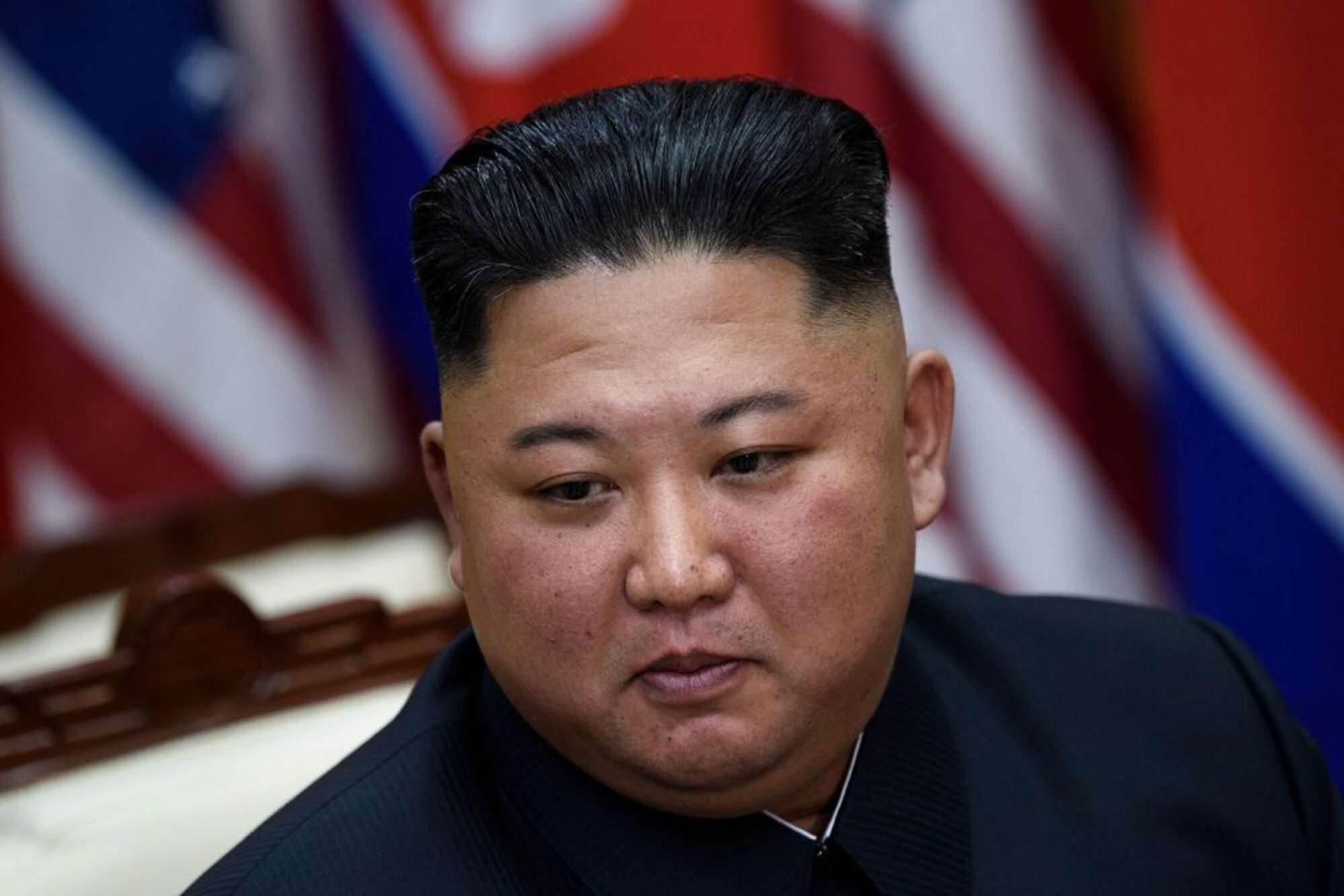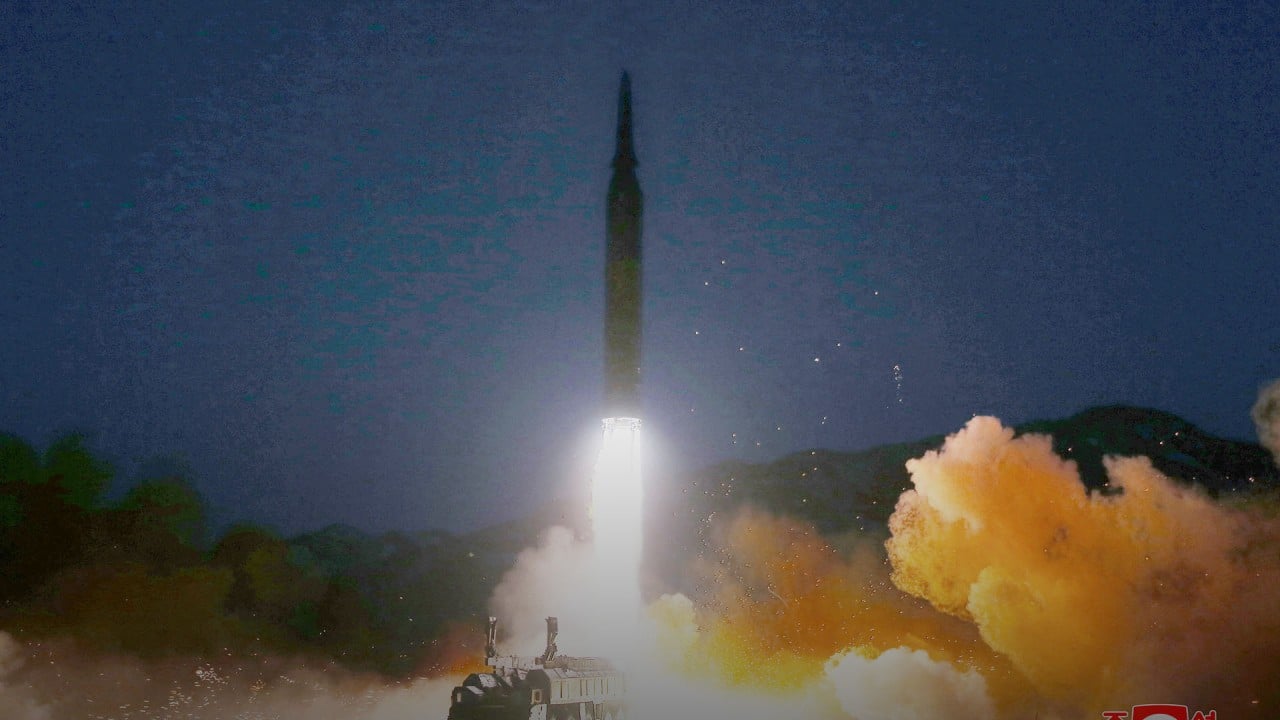
North Korea launches most powerful missile in years for record 7th weapons test of month
- Sunday’s missile launch comes as nuclear-armed North Korea flexes its military muscles while ignoring Washington’s offers of talks
- South Korea’s president Moon Jae-in says situation starting to resemble 2017, when provocative tests led to war threats between Kim and Trump
Pyongyang has never test-fired this many missiles in a calendar month before and last week threatened to abandon a nearly five-year-long self-imposed moratorium on testing long-range and nuclear weapons.
The Japanese and South Korean militaries said the missile was launched on a high trajectory, apparently to avoid the territorial spaces of neighbours, and reached a maximum altitude of 2,000km (1,242 miles) and travelled 800km (497 miles) before landing in the sea after about 30 minutes.

The flight details suggest the North tested its longest-range ballistic missile since 2017, when it twice flew intermediate-range ballistic missiles over Japan and, separately, three intercontinental ballistic missiles that showed the potential to reach deep into the American homeland.
The unusually fast pace of tests in recent days indicates North Korea’s intent to pressure the Biden administration over long-stalled nuclear negotiations as pandemic-related difficulties put further stress on an economy broken by decades of mismanagement and crippling US-led sanctions over its nuclear weapons programme.

Rucndprk? If Japan joins Aukus, what will China, Russia, North Korea do?
In his strongest comments toward the North in years, Moon said the situation around the Korean peninsula is beginning to resemble 2017, when North Korea’s provocative run in nuclear and long-range missile testing resulted in an exchange of war threats between Kim and Trump.
Moon said the North’s latest moves violated UN Security Council resolutions and were a “challenge toward the international community’s efforts to denuclearise the Korean peninsula, stabilise peace and find a diplomatic solution” to the nuclear stand-off.
The North “should stop its actions that create tensions and pressure and respond to the dialogue offers by the international community including South Korea and the United States,” Moon said, according to his office.

Moon had ambitiously pushed for inter-Korean engagement and held three summits with Kim in 2018 while also lobbying to set up Kim’s first summit with Trump in 2018, where they issued vague aspirations for a nuclear-free peninsula.
But the diplomacy derailed after the collapse of the second Kim-Trump meeting in 2019, when the Americans rejected North Korea’s demand for major sanctions relief in exchange for a partial surrender of its nuclear capabilities.
Japan’s top government spokesman Hirokazu Matsuno said on Sunday that the ballistic missile “was one with intermediate-range or longer range” while Japanese Defence Minister Nobuo Kishi said the missile was the longest-range the North has tested since November 2017.

The United States condemned the launch, with a State Department spokesperson saying it was a “clear violation” of multiple UN Security Council resolutions.
The US Indo-Pacific Command called on Pyongyang to refrain from further destabilising acts but said the latest launch did not “pose an immediate threat to US personnel, territory, or that of our allies”.
North Korea has embarked on a flurry of sanctions-busting tests in recent weeks, conducting a series of launches that have displayed a dizzying array of weapon types, launch locations, and increasing sophistication.
From hypersonic missiles and long-range cruise missiles to missiles launched from railways and airports, the tests highlight the country’s rapidly expanding and advancing arsenal amid stalled denuclearisation talks.
Friday saw state media release photos showing Kim wearing his usual long black belted leather jacket, surrounded by uniformed officials – their faces pixelated out – inspecting a munitions factory that produces “a major weapon system”.
“Kim has been withholding his appetite for testing and provocations,” said Soo Kim, an analyst at the US-based RAND Corporation think tank.
Now however, “the time is ripe, and North Korea’s continued missile firing will only throw another wrench into Washington’s already high plate of foreign policy challenges,” she added.
[Pyongyang] wants to remind Washington and Seoul that trying to topple it would be too costly
The frenzy of missiles was also aimed at reminding the world that “the Kim regime hears external discussions of its domestic weaknesses,” said Leif Easley, a professor of international studies at Ewha University.
“It wants to remind Washington and Seoul that trying to topple it would be too costly,” he added.
North Korea’s pandemic isolation fuels humanitarian disaster fears
Domestically, North Korea is preparing to celebrate the 80th anniversary of the birth of late leader Kim Jong-il in February, as well as the 110th birthday of founder Kim Il-sung in April.

.png?itok=arIb17P0)

